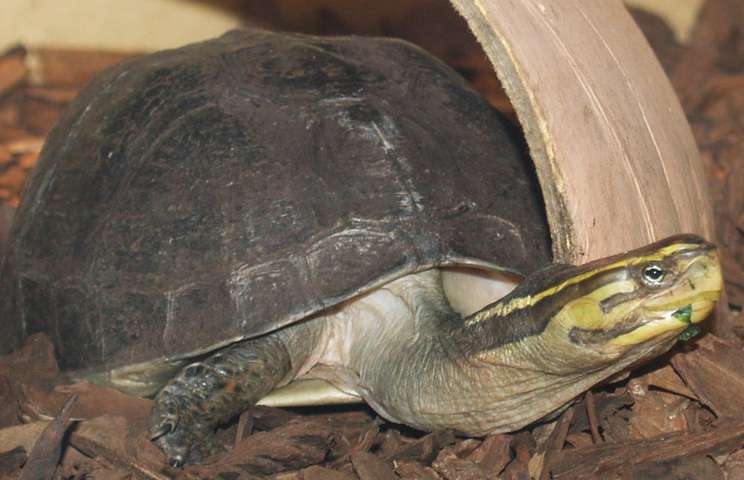
The three-toed box turtle, which may be found from Missouri south to Texas and Alabama, gets its name from the fact that it only has three toes on its hind feet whereas other box turtles have four. These American-native turtles have a dapper, classic appearance and are among the most well-liked pets among those who love turtles. Box turtles in general, including three-toed box turtles, aren’t the best pets for novice turtle keepers or households with very young children. These animals dislike handling and may experience health issues as a result of stress if they are picked up. They actually need more care than other turtle species do, and they like predictable situations. Even a simple trip to the veterinarian can be stressful for them.
Care as a Pet

Heat
They do much better outside if the weather is conducive. Build non-toxic, rot-resistant walls at least 20 inches tall in your outdoor cages on well-draining soil. The wall barrier should also reach down, at least 10 inches underground, to prevent your turtles from digging an escape. The minimum dimensions are four feet broad by four feet long, although eight feet long is recommended. This species need space to dig and roam. Aquaria are too tiny to keep adults; however, hatchlings and juveniles can be kept in a sizable indoor terrarium. For every eight inches of shell length, each turtle in your terrarium needs at least three square feet of floor space.
Housing
They do much better outside if the weather is conducive. Build non-toxic, rot-resistant walls at least 20 inches tall in your outdoor cages on well-draining soil. The wall barrier should also reach down, at least 10 inches underground, to prevent your turtles from digging an escape. The minimum dimensions are four feet broad by four feet long, although eight feet long is recommended.
This species needs space to dig and roam. Aquaria are too tiny to keep adults; however, hatchlings and juveniles can be kept in a sizable indoor terrarium. For every eight inches of shell length, each turtle in your terrarium needs at least three square feet of floor space.
Humidity
When housed in a humid environment, box turtles are far less prone to get any form of infection. Three-toed box turtles prefer a little bit more humidity than other species even in captivity, so regularly spray their enclosure or turn on a sprinkler for extra moisture.
For increased humidity, placing a small heater above the water bowl will also contribute to some evaporation. Keep heaters away from your turtle at all times since they can get hot enough to burn. If you want to make sure the humidity stays between 70 and 80 percent, install a hygrometer in the enclosure.
Feed
The adult three-toed box turtles are omnivores, unlike their younger counterparts, which are more carnivorous in order to grow. Vegetables, fruit, and hay or grasses should make up about half of their diet; the other half should be low-fat protein sources. Earthworms, slugs, snails, mealworms, crickets, grasshoppers, small fish, and other whole, live foods are ideal, although cooked lean meats and low-fat, premium dog food can be offered as a supplement.
Feed your turtle no more than three times per week if you follow this routine. Only feed juveniles every other day if you are feeding them. Only feed your turtle during the morning or afternoon, when it is most likely to be active, and only give them as much as they can consume in less than 10 minutes.
Table





